In recent decades, the significance of Islamic textiles has been examined in greater depth. These are objects that conveyed status, wealth and religious allegiance. They were avidly pursued beyond the borders of Islam, while at home they were an influence on many other creative media. The finest of these cloths were considered to be the very definition of luxury. Not even serious upheavals put a stop to a trade in wares that aroused universal admiration. ‘Tiraz’ cloths with Arabic inscriptions can be seen in settings as unlikely as a 15th century painting by Andrea Mantegna of a Madonna and child. Islamic silks, in particular, exist in collections from all over the medieval world. This international mastery reached its peak later, with cloths from India which dominated the world during the 19th century.

Early Islamic textiles are usually found in fragmentary form. The IAMM collection comprises later, more complete examples. Most of these are from the eastern end of Islam, which took over the Arab world’s position as the leading producer of superior cloths. The Mughals were responsible for some of the greatest advances in the field. Elaborate woven silks and brilliant colourfast dyes for cottons were hugely popular. Above all, the intricate plant motifs developed in Kashmir made their mark on the world, most notably as the shawls that were later copied by the workshops of Paisley in Scotland.
Indian expertise at weaving and printing was matched by embroidery. Inspiration from Iran is visible in much of India’s textile tradition, including Kashmir shawls, and the introduction of woven silk and velvet brocades by Emperor Akbar (1543-1605) can be directly attributed to Persian inspiration. Once mastered in India, they became among the Subcontinent’s most dazzling achievements. Similarly, embroidery was a skill at which Iran and the Ottoman Empire had demonstrated special expertise. This later became a significant part of the Indo-Persian culture at the Mughal court.
Central Asia has an easily identifiable textile style that differs from India and Iran in its bold designs and striking colours. Although embroidery was used extensively, it is the ikat weaves of the region that have left the most eye-catching legacy. Bukhara and Samarqand were the main production centres for clothing and wall hangings of almost psychedelic impact, executed in vivid colours. Woven in silk, or cotton and silk, these ikats pulsate with an energy that makes them look entirely modern. For other Central Asian peoples, such as the Turkomans, a more sober and delicate approach was preferred.

Textiles were used for decorative as well as sartorial purposes. With the nomadic origins of so many of Islam’s ruling dynasties, it was inevitable that they would continue to value the portability of textiles as well as their luxury. For the rest of society, nostalgia played a smaller part than practicality. With a general scarcity of wood, woven products were the obvious choice for wall and floor coverings. While carpet making has continued into the 21st century, other weaving traditions are more likely to be found in a museum.














